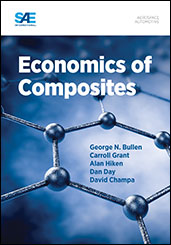Journal Article
Study on Fatigue Behaviors of Porous T300/924 Carbon Fiber Reinforced Polymer Unidirectional Laminates
2017-03-28
2017-01-0223
Morphological features of voids were characterized for T300/924 12-ply and 16-ply composite laminates at different porosity levels through the implementation of a digital microscopy (DM) image analysis technique. The composite laminates were fabricated through compression molding. Compression pressures of 0.1MPa, 0.3MPa, and 0.5MPa were selected to obtain composite plaques at different porosity levels. Tension-tension fatigue tests at load ratio R=0.1 for composite laminates at different void levels were conducted, and the dynamic stiffness degradation during the tests was monitored. Fatigue mechanisms were then discussed based on scanning electron microscope (SEM) images of the fatigue fracture surfaces. The test results showed that the presence of voids in the matrix has detrimental effects on the fatigue resistance of the material, depending on the applied load level.

